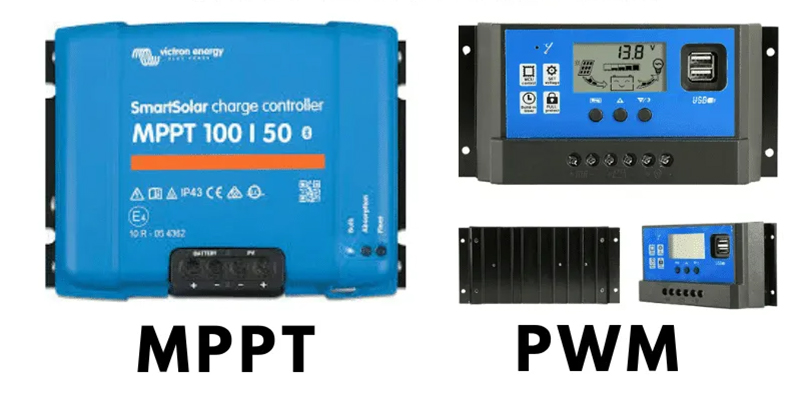Introduction
In the quest for sustainable energy solutions, solar power has emerged as a frontrunner. As we tap into the abundant energy of the sun, it becomes crucial to efficiently manage and control the flow of this renewable resource. This is where the solar charge controller, also known as the solar energy controller, plays a vital role. In this article, we will explore the significance of this device and its contribution to the widespread adoption of solar energy.
Understanding the Solar Charge Controller
The solar charge controller acts as the brain of a solar power system, regulating the charging and discharging of batteries. Its primary function is to prevent overcharging and over-discharging, ensuring the longevity and efficiency of the batteries. By intelligently managing the flow of energy, it maximizes the utilization of solar power and safeguards the entire system.
Types of Solar Charge Controllers
There are primarily two types of solar charge controllers: PWM (Pulse Width Modulation) and MPPT (Maximum Power Point Tracking). PWM controllers are cost-effective and suitable for small-scale applications, while MPPT controllers are more efficient and ideal for larger installations. Both types offer unique advantages, allowing users to choose the most suitable option based on their specific requirements.
If maximizing charging capacity were the only factor considered when specifying a solar controller, everyone would use a MPPT controller. But the two technologies are different, each with it’s own advantages. The decision depends on site conditions, system components, size of array and load, and finally the cost for a particular solar power system.

The charge controller is a key component of a solar power system and specifying the best one for the system requires some analysis. Below is a quick overview.
An MPPT controller is better suited for colder conditions. As solar module operating temperature goes down, the Vmp1 increases. That’s because the voltage of the solar panels operating at their peak power point at Standard Testing Conditions (STC is 25C°) is about 17V while the battery voltage is about 13.5V. The MPPT controller is able to capture the excess module voltage to charge the batteries. As a result, a MPPT controller in cool conditions can produce up to 20 – 25% more charging than a PWM controller.
In comparison, a PWM controller is unable to capture excess voltage because the pulse width modulation technology charges at the same voltage as the battery. However, when solar panels are deployed in warm or hot climates, their Vmp decreases, and the peak power point operates at a voltage that is closer to the voltage of a 12V battery. There is no excess voltage to be transferred to the battery making the MPPT controller unnecessary and negating the advantage of an MPPT over a PWM.

Solar charge controllers are a crucial part of any off-grid solar system. But it can be difficult to understand exactly how they function. Below, we’ve listed several key features of a solar charge controller:
Flow of power: A solar charge controller manages the flow of power from a solar panel to a backup battery, preventing too much energy from flooding the battery. This can drastically reduce the life of the battery.
Battery choice: Both types of solar charge controllers, PWM and MPPT, allow you to select the type of battery that it’s connecting to.
Range of voltages: Both types of solar charge controllers feature a range of voltages you can set. However, these vary based on the type and size of solar charge controller you purchase.
Display: Some solar charge controllers feature an LCD display, while others are more basic and have dials you can turn to select voltage and other settings.
Heat sensor: Some solar charge controllers feature a heat sensor to monitor battery temperature.
Smart options: More advanced charge controllers feature Bluetooth connectivity and are app-enabled as well.
Features and Benefits: Solar charge controllers come equipped with a range of features that enhance the performance and reliability of solar power systems. These include:
- Battery Protection: The controller prevents battery damage by regulating the charging process, ensuring optimal battery health and extending its lifespan.
- Load Control: It manages the distribution of power to various loads, preventing overload and ensuring a stable power supply.
- Temperature Compensation: Some advanced controllers adjust the charging voltage based on temperature, optimizing battery performance in different weather conditions.
- Data Monitoring: Many controllers offer real-time data monitoring, allowing users to track energy production, battery status, and system performance.
The benefits of using a solar charge controller are numerous. It not only protects the batteries from damage but also increases the overall efficiency of the solar power system. By preventing overcharging and over-discharging, it ensures a consistent power supply and reduces the need for maintenance.
.jpg)
Installation and Maintenance: Installing a solar charge controller is a straightforward process. It requires connecting the solar panels, batteries, and loads to the controller following the manufacturer’s instructions. Regular maintenance involves checking the connections, cleaning the panels, and inspecting the controller for any signs of wear or damage. With proper installation and maintenance, the solar charge controller can provide reliable service for many years.
The Future of Solar Charge Controllers
As solar energy continues to gain momentum, the demand for advanced solar charge controllers is expected to rise. Innovations in technology will lead to more efficient controllers with enhanced features, making solar power systems even more reliable and cost-effective. With the integration of smart grid capabilities, solar charge controllers will play a crucial role in the transition towards a sustainable and decentralized energy future.
Conclusion
The solar charge controller is an indispensable component of any solar power system. Its ability to regulate and optimize the flow of energy ensures the efficient utilization of solar power while protecting the batteries from damage. As we embrace the potential of solar energy, the solar charge controller paves the way for a greener and more sustainable future. Let us harness the power of the sun and embrace the possibilities it holds for a brighter tomorrow.

